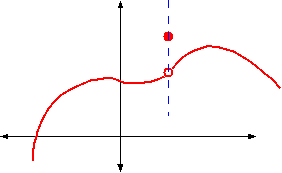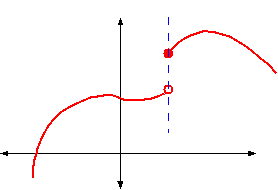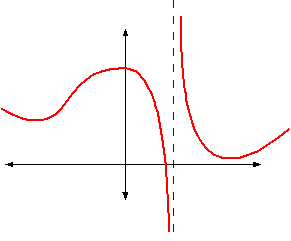On-line Math 21
On-line Math 21
Classification of discontinuities
Discontinuities of a function f (points x where f is not
continuous) can be separated into several distinct categories:
Removable discontinuities. These are places x0 where
f just has the wrong value, and that if you change the definition of
f at x0 , the function would be continuous.
 Jump-discontinuities. Are points x0 so that the left-
and right-hand limits exist, but are unequal. The value of the function could
be either one-sided limit.
Jump-discontinuities. Are points x0 so that the left-
and right-hand limits exist, but are unequal. The value of the function could
be either one-sided limit.
 Poles. Also called infinite discontinuities. These are places where
the limits (one side or both) are infinite.
Poles. Also called infinite discontinuities. These are places where
the limits (one side or both) are infinite.
 Essential singularities. These are places where not even the one-sided
limits exist, not even as infinities. Two examples would be:
Essential singularities. These are places where not even the one-sided
limits exist, not even as infinities. Two examples would be:
which is not continuous at any point, and has no one-sided limits, so has essential
singularities at all points, and
which has an essential singularity at x = 0 .
Copyright (c) 2000 by David L. Johnson.
File translated from
TEX
by
TTH,
version 2.61.
On 18 Oct 2000, 00:45.



